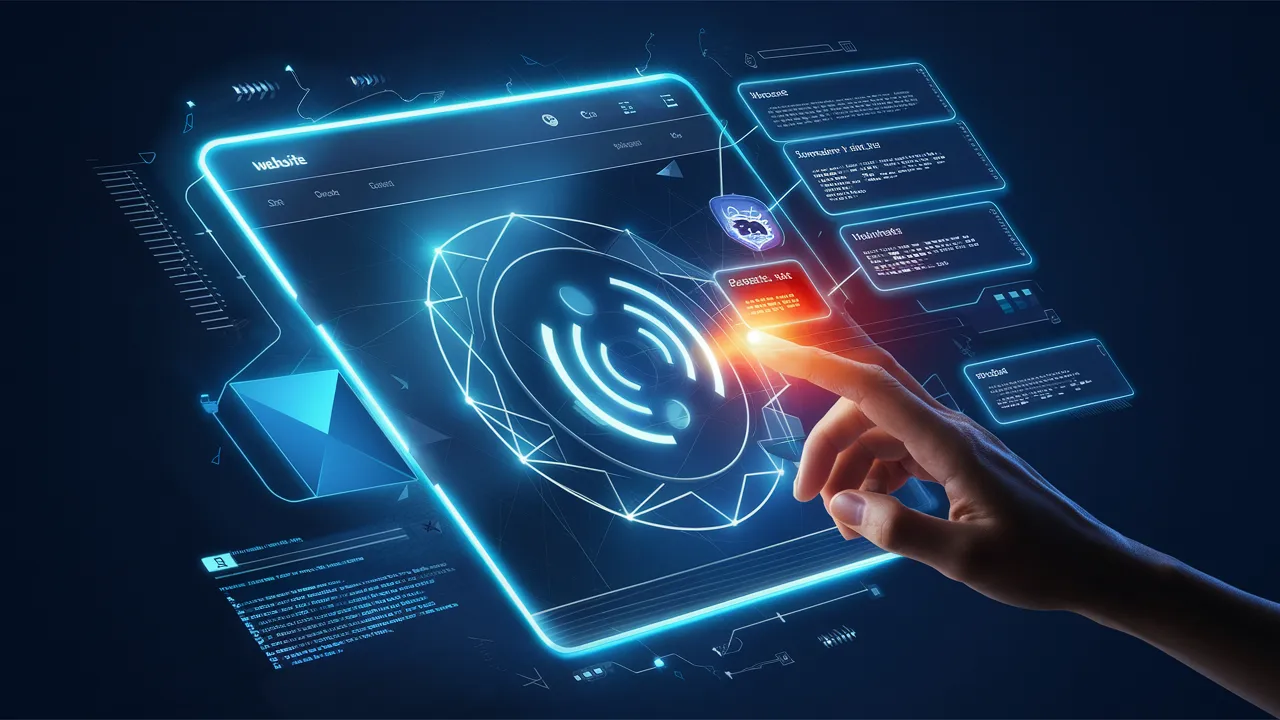Web design is something we go through every day, perhaps unconsciously. Think about it: each time you enter a website, flip through a blog or buy something online, you are experiencing the creative vision of a designer. It’s like the backdrop of our digital lives. Now, a new sheriff comes to town, Artificial Intelligence, stirring things up.
Gone are the days when designers spent hours in detail, choosing colors, layouts, and fonts. These days, AI is stepping up not just as an assistant, but as one that’s rewriting the way we build websites. But what does that really mean? Is it just a buzzword, or is it actually changing web design? Well, spoiler alert: it’s the latter, and in ways that are both thrilling and, honestly, a bit mind-boggling.
The Rise of AI in Web Design; Not Just Another Fad
The world of design has seen some rapid changes over the years. We’ve witnessed the emergence of design trends in the minimalist movement and a strong focus on user experience. However, now artificial intelligence is taking things to the next level. Picture a scenario where websites are not only created for users but also crafted by algorithms that learn and adapt based on preferences. That’s the innovation AI is bringing forth.
For many people, the concept of AI in web design may sound like something out of a movie. Yet it is very much a reality and it is happening as we speak. AI tools such as The Grid Wix ADI and Bookmark’s AIDA are at the forefront of this movement, assisting designers in creating stunning and responsive websites effortlessly. With these tools, designers are not just speeding up their workflow; they are also producing more engaging designs. And the best part? They don’t have to compromise on creativity, for efficiency.
Now let’s shift our focus to backgrounds in web design. They often go unnoticed but play a role in setting the tone and mood for the entire page. However, finding the perfect background can be quite a challenge. It requires a blend of colors, textures and elements that harmonize seamlessly. This is where AI truly excels.
AI-powered design tools now have the ability to create backgrounds that are not only visually appealing but also tailored for maximum engagement. Take Runway ML for instance, this AI tool empowers designers to craft backgrounds that are dynamic and breathtaking with just a few clicks. It’s akin to having an endless collection of artwork at your disposal but even better as it can be personalized to suit your specific preferences.
AI doesn’t randomly generate images. It analyzes data, identifies trends and produces visuals that resonate with your target audience. Picture a vivid abstract background that subtly shifts and adjusts based on user interactions, drawing them deeper into the content. Or envision a minimalist, calming layout that evolves in real-time to align with the user’s preferences. This goes beyond mere design; it’s purposeful design.
Layouts play a role in any website. They shape the user’s journey, guide their attention, and convey a narrative. Traditionally, creating a layout involved adhering to guidelines such as grids, alignments and balance. However, with AI, these traditional rules are being redefined.
AI-powered layout generators have evolved beyond simply arranging elements on a screen. They now focus on crafting immersive experiences. Tools such as Adobe Sensei and Figma’s AI features are transforming the way layouts are created. They analyze user behavior, anticipate needs and propose layouts that feel seamless, intuitive and visually appealing. Imagine a website that adapts its design based, on the time of day or the user’s mood. While it may seem unconventional, AI technology can make it a reality.
By learning from interactions, AI can dynamically adjust layouts by repositioning elements altering colors and modifying spacing to maintain user engagement. It’s akin to a website coming to life, with its responsiveness and adaptability.
Real-Life Examples: AI in Action
It’s all well and good to discuss the possibilities of AI in web design, but let’s get down to brass tacks. There are already brands and designers leveraging AI to craft amazing user-centric websites. Let’s explore a few examples that highlight the capabilities of AI.
1. Wix ADI and Moleskines Digital Experience
Moleskine, the cherished brand famous for its notebooks, took a step by collaborating with Wix ADI to shape its digital presence. Wix ADI (Artificial Design Intelligence) is more than just a website builder; it’s an AI that adapts to your design preferences and generates customized, visually appealing layouts.
When Moleskine utilized Wix ADI, it developed a website that was not only functional but also stunning, reflecting the brand’s essence. The AI-powered process was completed in hours, significantly quicker than conventional approaches, resulting in a clean and engaging design that resonated with Moleskine’s creative audience.
2. The Grid: The AI Designer That Thinks for You
The Grid was among the pioneering AI tools to create a buzz in the design industry, and it had good reason to do so. It promised a breakthrough concept, websites that could design themselves. Although it encountered challenges during its early stages, The Grid offered us a sneak peek into the potential of AI-driven design.
Leveraging algorithms, The Grid could generate layouts select color schemes and even recommend content placement based on user engagement insights. It resembled having a designer available around the clock, continuously fine-tuning the website to captivate visitors. Brands that adopted The Grid such as Well Defined Body discovered that their websites were not only visually appealing but also highly effective in boosting engagement and conversions.
3. AirBnB’s AI-Powered Design System
AirBnB has always been at the forefront of innovation and its AI-driven design system showcases how artificial intelligence can enhance the design process. With the use of learning, this system suggests layout changes generates design elements and even anticipates the user’s next move. It’s akin to having an AI buddy that knows what the user wants before they do.
This strategy has enabled AirBnB to uphold a consistent and high-quality design throughout its platform, making it simpler for users to navigate and interact. It serves as an illustration of how AI can eliminate guesswork in design and create experiences that feel seamless and natural.
The Human Component; AI and the Future of Design Collaboration.
You can only ask, “Isn’t AI going to replace the human designer?” In fact, it is a question that pops up in many conversations. But the fact remains that AI has not come to take over but rather to work with people. AI tools are supposed to be assistants that take designers away from tasks so that they may focus on what really matters-creating things.
With AI, designers would have to pay less attention to minute information and more to the big picture. They can explore, break conventional barriers, and innovate freely since AI takes care of the rest. In this collaboration, creativity is enhanced, not replaced. The result is more intelligent, captivating designs that are closer to user preference.
Read More: thevyvymanga
Conclusion: Opening Up to AI in Web Design
AI in web design is more than just a fad; it’s a paradigm shift in how we reimagine beauty, interaction, and even creativity. The enabled designer can create visually stunning experiences that are personalized to individual tastes and therefore more engaging. Be it through generating backgrounds that optimize layouts or even predict what a user may need; AI is shifting the boundaries of possibility in web design.
The one thing that can be said with a hint of surety, as more brands get on board with the technology, is that we will continue seeing even more groundbreaking and eye-catching designs that will further beautify the internet. So, if you are a designer, then do not be afraid of this AI wave; instead, ride on and let it take your designs up to the moon-unchartered territories. After all, AI is not just about designing websites; it is actually about creating experiences which will touch, inspire, and connect with people at a deeper level.



